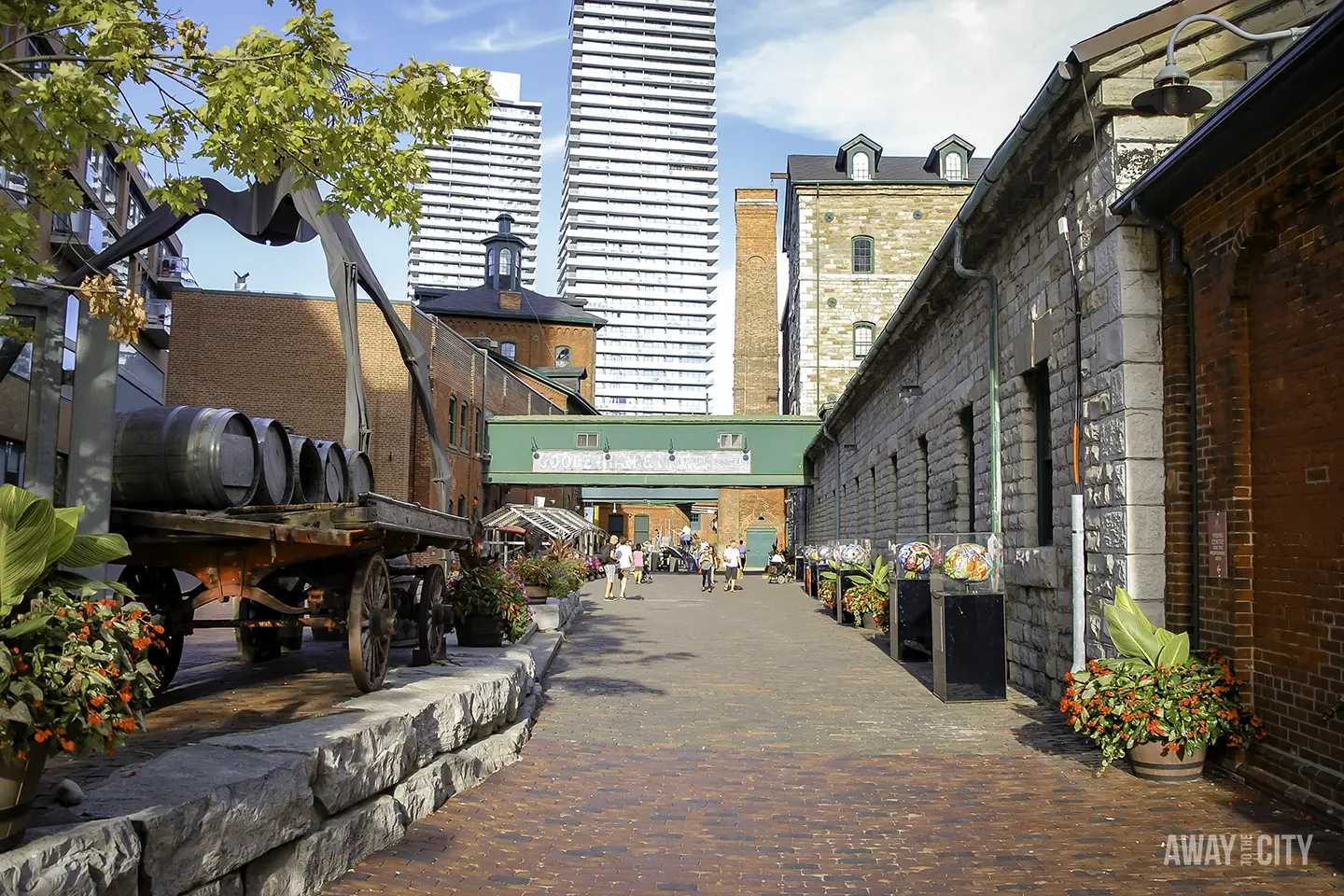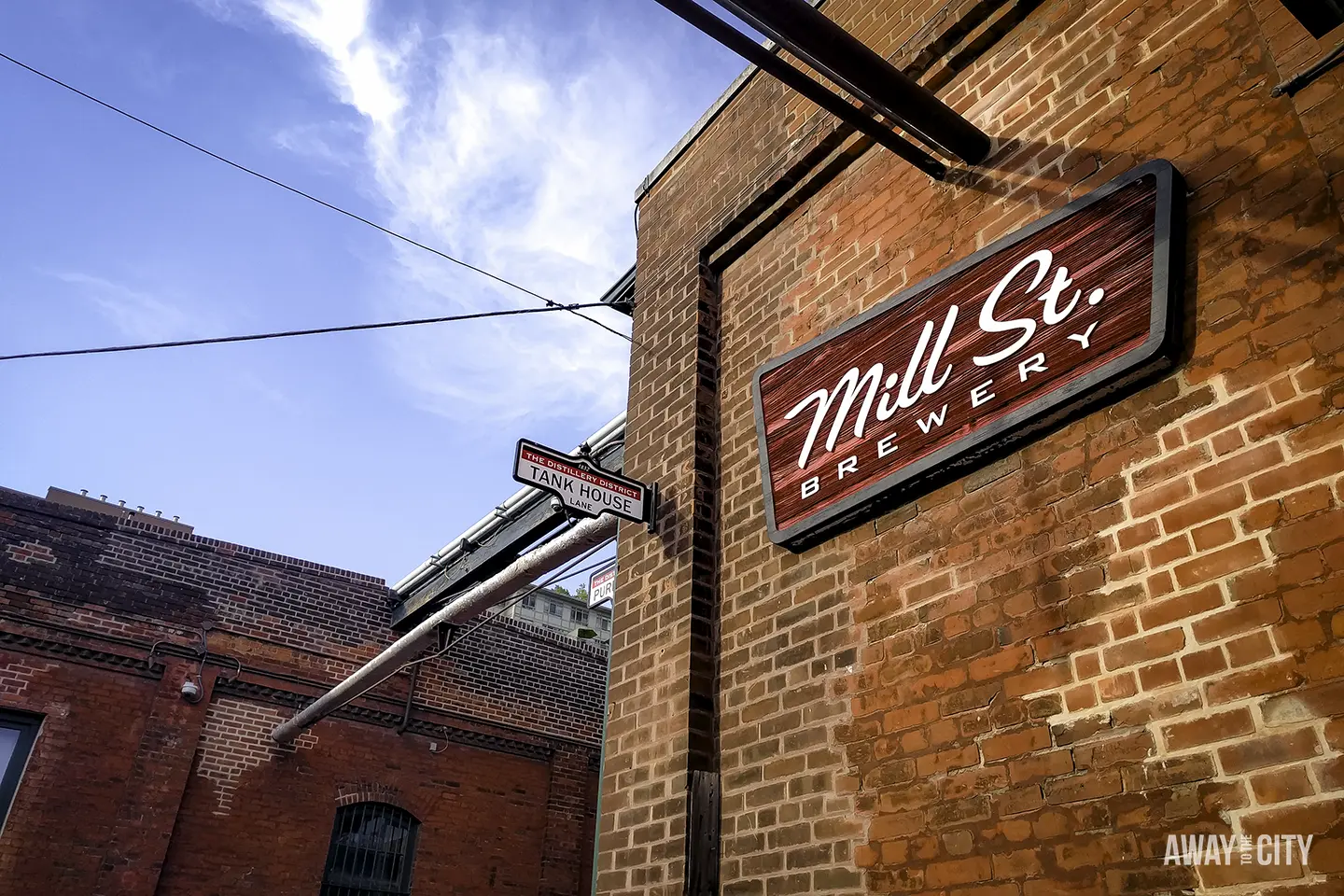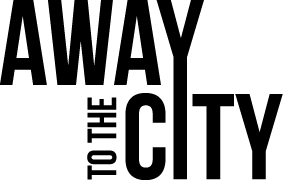Summer in Toronto, Canada: 12 Best Things to Do in 2025
Planning to visit Toronto in the summer? Here are the very best things to do in Toronto during the summer months – perfect for first-time visitors!

Canada was one of our favourite places to explore when we lived in NYC, and even though we now call London home, it remains one of our favourite countries. We’ve always felt that it doesn’t get the recognition it truly deserves. While many visitors come to Canada for its stunning natural beauty, there’s also plenty to experience in terms of history and urban culture.
One of Canada’s gems is Toronto, the country’s most populous city and one of the world’s most diverse urban hubs, with almost half its 2.9 million residents born outside of Canada.
Toronto offers something for everyone, from its vibrant music scene and museums to picturesque lakefront views and diverse dining options.
Here’s our list of the 12 must-do activities in Toronto that would make a great itinerary if you plan a summer trip in 2025, especially if this is your first visit!
Some of the links in this post are affiliate links. If you click on the link and purchase the item or service, we may receive a small commission at no extra cost to you. By using our links, you’re supporting us to provide you with free content for your city trips. Learn more on our Privacy Policy page.
Short on time?
Here are our favourite things to do in Toronto in the summer:
Must-See: The top 5 things you shouldn’t miss when visiting Toronto during the summer months are:
Hotels: Our favourite hotel in Toronto is the Canopy by Hilton Yorkville. Here’s the full list of Toronto hotels.
Tours & Experiences: You can find local tours & book tickets for Toronto attractions on Viator and GetYourGuide. Here are a few great tours in Toronto:
12 Best Things to Do in Toronto This Summer 2025
Summer in Toronto brings outdoor festivals, bustling patios and a lively atmosphere into its streets. There’s so much to do that it can be difficult to decide what to see and do.
Here’s the list of the things we think you shouldn’t miss when you visit the city during the summer months of June, July, August or September.
1. Distillery District
Established in the 1830s, the Distillery District once served as home for the Gooderham & Worts Distillery, one of the world’s largest distilleries during the late 19th century. In the early 2000s, its grounds were converted into pedestrian-only streets.

The district features brick-lined streets and more than 40 well-preserved Victorian-era buildings. Some of them still operate breweries and distilleries, including Mill Street Brewery and Spirit of York Distillery Co. But the district also houses numerous art galleries, shops, cafes, and restaurants today.


Did you know? Due to its unique atmosphere and historic buildings, the Distillery District is an attractive filming location for movies and television shows such as “X-Men”, the movie adaptation of the musical “Chicago”, and “The Incredible Hulk”.

Summer brings to the Distillery District an explosion of street performers, lively patios, and unique shops. Enjoy a cold beverage or ice cream as you soak up some sunshine on one of many street-side terraces!

Our Top Tips for Visiting the Distillery District
- If you enjoy history like us, a walking tour is highly recommended! We took part in this one-hour walking tour and really enjoyed it! It’s the perfect way to gain insights into the area’s past while discovering local treasures guided by an expert local.
- If you plan to dine at one of the restaurants, it’s wise to make a reservation to avoid long waits.
- There are many exciting events taking place throughout summer in the Distillery District. Keep an eye on the Distillery District’s website to see what’s on during your visit.
Admission and opening hours: You can explore the Distillery District free of charge. It’s open from 10am-6pm Monday to Thursday, 10am-7pm Friday and Saturday, and 11am-6pm Sunday.
2. Toronto Islands
Hop on the 15-minute ferry from Jack Layton Ferry Terminal (mainland Toronto) to the Toronto Islands. It’s a great way to escape the hustle and bustle of the city.
Toronto Islands consist of 15 interconnected small islands just off Downtown Toronto. In 1858, a fierce storm turned Toronto Islands from part of the mainland into separate islands.


Our top tip: For an exciting excursion through the Toronto Islands with breathtaking views of the city’s skyline, book this sightseeing cruise. We loved the guide’s commentary and learned a lot about the history of the islands!
Enjoy a stroll or bike ride, the beaches, parks, and cafes on the car-free islands while relishing breathtaking views of Toronto’s skyline.
Admission and opening hours: A round-trip ticket on the Toronto Island Ferry is CA$9.11 (approximately £5 or 6€ or US$7). Ferries depart every 30 minutes, potentially every 15 minutes, depending on weather and crowd needs. The first ferry typically departs around 8am, and its last return journey is scheduled at around 11:40pm during the summer.
3. Day Trip to Niagara Falls
Niagara Falls is the most powerful waterfall in North America, with over 3,160 tons of water thundering over the falls every second. It’s a must-see natural wonder for any Toronto itinerary.
The sheer power and volume of the cascading water left us speechless – and we’re sure it’ll be the same for you.
The falls are just a 1.5-hour drive from Toronto, so it’s a great day trip option. We opted for this Niagara Falls tour, which was very well-organised and hassle-free!

Did you know? Niagara Falls wasn’t always where it is today. Over 12,000 years ago, the falls were located much further downriver! Constant erosion has caused the falls to slowly retreat to its current position.

Summer is the ideal time to experience Niagara Falls. The warm weather lets you enjoy attractions like boat tours that take you close to the falls and scenic walkways with stunning views.
We’ve seen other large waterfalls, such as Gullfoss in Iceland, often called the “Niagara Falls of Iceland”, but none compared to Niagara Falls.
Our Top Tips for Visiting Niagara Falls
- Since the falls are between the US and Canada border, make sure you see the falls from both sides! We preferred the views from the Canadian side, as it offers a more panoramic view. But the American side provides a closer look.
- If you plan to visit the falls on both sides of the border, be prepared for border crossings. Have the proper documentation handy, and be aware that there may be waits.
- Prepare to get wet! The power of the falls creates a constant mist that can reach quite far. Pack a poncho or raincoat and waterproof shoes.
4. Casa Loma
Though Canada may not be known for castles, Toronto does offer one spectacular castle-esque structure. The 98-room mansion, Casa Loma, was constructed by businessman Sir Henry Mill Pellatt in 1914.
Travels through Europe inspired him to create this majestic mansion that towers over the Toronto cityscape.
While Casa Loma doesn’t rival famous European castles like Windsor Castle in the UK, Neuschwanstein Castle in Germany, or Vianden Castle in Luxembourg, it’s definitely worth visiting!


Did you know? Casa Loma has served as a popular filming location for numerous movies and television shows. It’s been featured in films like “X-Men” and “Scott Pilgrim vs. The World”.
The mansion boasts stately towers, secret tunnels, an underground pool, and exquisitely landscaped gardens. It’s one of North America’s largest private residences.
Our Top Tips for Visiting Casa Loma
- Purchase your tickets in advance to avoid waiting in line. Casa Loma is a popular tourist attraction in Toronto!
- Plan to arrive early to avoid crowds (especially in the summer months).
- Kick your tour off in the basement with a 15-minute movie about Casa Loma, then work your way upward – most people start from the bottom!
- Don’t miss Casa Loma’s tower for the stunning Toronto skyline and the underground tunnel leading to the garage!
- Make use of the included audio tour device. This will provide all the information needed for a self-guided tour.
Admission and opening hours: General admission tickets for Casa Loma are CA$40 (approximately £23 or 27€ or US$30). The mansion is open daily from 9:30am-5pm.
5. CN Tower
Toronto’s most iconic landmark is the 553-metre (1,815-foot) CN Tower. It was named after the Canadian National Railway (CNR), the railway company that initially funded its construction.
Constructed in 1976, this communications and observation tower was the world’s tallest free-standing structure until 2007, when Burj Khalifa in Dubai overtook it. However, it remains the tallest freestanding structure on land in the Western Hemisphere.

The CN Tower is one of the best places to take in the panoramic views of Toronto. The view from their observation decks (one observation deck even has a glass floor) and the revolving 360 Restaurant are stunning! It’s a must-visit destination for anyone visiting Toronto for the first time!

Did you know? If you reserve a table at 360 Restaurant and spend at least CA$75 (approximately £44 or 51€ or US$55) on food per person, you get free access to their observation levels after dining.


Our top tip: Make sure that the day’s forecast predicts clear skies! Otherwise, we wouldn’t recommend visiting, as all you’ll see from the summit are cloudy or grey skies. On clearer days, however, you might even spot Niagra Falls far in the distance!
Admission and opening hours: Tickets start from CA$43 (approximately £25 or 29€ or US$32) when bought online in advance. Same-day tickets online or onsite are slightly higher. The tower is open from 10am-9pm daily.
6. Toronto Summer Festivals
Toronto comes alive in the summer with numerous outdoor festivals. Take advantage of the beautiful weather by attending one of the city’s many street festivals. It’s one of the best ways to experience Toronto’s diverse cultural scene.
Below are our favourite summer festivals in Toronto:
- Toronto International Film Festival (TIFF) – If you love movies, TIFF should be on your bucket list. Whether this is your first visit or you’re a seasoned TIFF veteran, this festival promises an abundance of movies to watch, panels to attend, and the opportunity to catch glimpses of celebrities! | Dates in 2025: TBC
- Toronto Caribbean Carnival (formerly Caribana) – As North America’s largest Caribbean festival, this event takes over Toronto every August with a parade and multiple parties. | Date in 2025: TBC
- Beaches International Jazz Festival – Canada’s largest free jazz festival lasts over one month and provides audiences with diverse jazz performances that bring melodic bliss. | Dates in 2025: 4-27 July
- Summerlicious – Indulge in the fresh flavours of summer during Toronto’s favourite foodie event! | Dates in 2025: TBC
Here are some other popular Toronto summer festivals to explore: Taste of the Danforth (Greek food festival), Toronto Outdoor Art Fair (free art exhibition), North by Northeast (multi-genre music festival), and Canadian National Exhibition (large fair and show).
7. Picnic at High Park
One of the best things to do in Toronto in summer? Pack up a picnic basket and head out to Toronto’s largest public park, High Park! It’s the perfect place to enjoy a relaxing afternoon surrounded by nature.


Did you know? High Park is a great spot to see Cherry Blossoms in spring. In 1959, the Japanese ambassador to Canada gifted Toronto with 2,000 Sakura trees as a symbol of friendship between the two countries.
The park has many picnic areas, beautiful walking trails, sports fields, and gardens. Make sure to stop by Toronto Music Garden, where you’ll find sculptures designed to create musical tones when touched.
Admission and opening hours: High Park is free to explore and open 24/7.
8. St Lawrence Market
Established in 1803, St Lawrence Market is Toronto’s most famous marketplace. It has transformed from a modest farmers’ market to a bustling marketplace with over 120 vendors.


Did you know? National Geographic recognised St Lawrence Market as one of the top 10 food markets worldwide in 2011, alongside esteemed counterparts like Borough Market in London and Union Square Greenmarket in NYC.
St Lawrence Market provides fresh produce, meats, cheeses, baked goods, and international cuisines, reflecting Toronto’s multiculturalism. Plus, in summer, the market comes alive with special events like cooking demonstrations, outdoor barbecues, and live music performances – an absolute foodie heaven!
While St Lawrence Market’s main draw is its food offerings, don’t overlook its architectural charm! Renovated between the 1970s and 1990s after years of neglect, its hall features Georgian, Victorian, and Edwardian architectural styles that blend beautifully.

Top Tips for Visiting St Lawrence Market
- If visiting on a weekend, arrive early to beat the crowds. Also, avoid lunch hours on weekdays as there can be long lines.
- Most visitors only explore the ground floor. Make sure to check out the lower level and second building as well.
- In Toronto on a Saturday? Drop by the Farmer’s Market, open every Saturday from 5am-3pm. We had a great time!
- If you like guided tours and trying local eats, check out this walking food tour for a more in-depth market experience.
- If you want to find bargains, plan your visit about one hour before the market closes.
Admission and opening hours: St Lawrence Market is free to explore and open from 9am-7pm Tuesday to Friday, 7am-5pm Saturday, and 10am-5pm Sunday.
9. Fort York National Historic Site
History buffs won’t be disappointed, even in Toronto’s sizzling summer! Visiting Fort York offers visitors a fascinating look back into Toronto’s military past – and it’s free.
Fort York was established in 1793 by John Graves Simcoe, a British Army general. He was the first lieutenant governor of Upper Canada who wanted to protect York against potential American threats.

Did you know? York was originally established in 1793 and served as Upper Canada’s capital city until 1841. Over time, it evolved into the city of Toronto.

It played an essential role in defending American forces during the Battle of York in 1812. The fort was captured in 1813 and partially destroyed by American troops during the battle. It was rebuilt after the war.
Fort York underwent extensive restoration efforts during the 1930s to restore it back to its appearance during the War of 1812. Today, it’s preserved as a 43-acre archaeological park.
Our Top Tips for Visiting Fort York
- Join one of the free guided tours at Fort York at 11am, 12pm, 1pm, 2pm or 3pm. It’s really interesting and gives you a good sense of the soldiers’ and officers’ lives in the fort!
- Start by watching a short history movie at the visitor centre before exploring Fort York itself.
- For an immersive Fort York experience, try visiting on the weekend. You’ll find people in costumes playing different characters from Fort York’s past.
- In summer, Fort York also hosts free outdoor screenings as part of Toronto’s Outdoor Picture Show (TOPS). Dates in 2025: TBC.
Admission and opening hours: Fort York is free to explore and open from 11am-4pm Wednesday to Sunday; it’s closed on Monday and Tuesday.
10. Nathan Phillips Square
Nathan Phillips Square is a large space in Toronto’s centre that’s great for enjoying summer vibes and taking pictures. Soak up the summer vibes next to the famous illuminated Toronto sign that shines brightly against the clear, crisp summer sky.

Nathan Phillips Square was named in honour of former Mayor Nathan Phillips and opened in 1965. Toronto hosts several special events, such as the Cavalcade of Lights, New Year’s Celebrations, and film screenings and concerts at this iconic site each year.

Our top tip: Check out the events calendar for Nathan Phillips Square to find out what’s on during your stay – you might find some fantastic events that perfectly align with your interests!
Next to the fountain, you’ll find Toronto’s Peace Garden. It was created as a symbolic tribute to the atomic bombing of Hiroshima and Toronto’s commitment to global peace.


Did you know? During winter, the square’s water fountain transforms into an outdoor ice rink.
Surrounding Toronto City Hall, which is known for its modernist design with distinctive curved towers, stands its iconic neighbours: Toronto Eaton Centre and Old City Hall.
11. Royal Ontario Museum (ROM)
Among Toronto’s museums, the Royal Ontario Museum is the city’s jewel. Affectionately known as the ROM, it holds over 13 million artefacts and exhibits, from dinosaur skeletons and ancient Egyptian mummies to centuries-old textiles.
Established in 1914, it’s one of North America’s oldest museums.

Admittedly, the museum’s entry fee might seem pricey, especially compared to the free admission offered by renowned museums in cities like London (e.g. the Natural History Museum and the British Museum). But its diverse exhibits make every minute well spent inside.
Even if you decide not to enter, take time to appreciate the museum’s remarkable architecture, which seamlessly blends historic Neo-Romanesque features with the modern, crystal-shaped extension by architect Daniel Libeskind. We genuinely like the building’s design!

Did you know? Though many have praised Toronto’s ROM for its groundbreaking glass structure, some architectural critics have sharply criticised its crystal-shaped addition. Some consider the sharp angles and deviation from classic aesthetic beauty “ugly” and “useless”, making it one of the most hated buildings in Canada.

Our Top Tips for Visiting ROM
- Plan ahead and purchase tickets early. Tickets are cheaper in advance and help you avoid long wait times at the entrance.
- You can experience ROM’s exhibitions and galleries free on the third Tuesday evening of each month (4:30pm-8:30pm).
- When we visited in the summer, the AC was quite cold in some of the rooms, so bring something to cover up.
- For a less crowded experience, plan your visit on Tuesday-Thursday if you’re in Toronto for several days.
Admission and opening hours: Tickets for ROM start from CA$26 (approximately £15 or 18€ or US$19). The museum is open from 10am-5:30pm Tuesday to Sunday; closed on Monday.
12. Pedestrian Sundays at Kensington Market
Kensington Market, contrary to its name, isn’t actually a market. It’s a unique, food-oriented neighbourhood in Toronto that has evolved from a multicultural immigrant hub to a bohemian haven.
Every last Sunday of the month from May to October, the Kensington Market area becomes a pedestrian-only zone. This is an incredible chance to stroll at your own pace through these streets.

The area features a mix of independent shops, vintage boutiques, hole-in-the-wall eateries, and graffiti-adorned alleyways, similar to London’s Camden Market.
If you enjoy quirky hipster hangouts or simply want to experience a taste of international street food, then Kensington Market is a must-visit for you!

Admission and opening hours: Kensington Market is free to explore and open daily. Kensington’s Pedestrian Sundays happen the last Sunday of every month throughout summer.
Interactive Map: Top Activities and Must-See Spots in Toronto in Summer
We’ve put together an interactive map for you to enhance your summer trip to Toronto. It features all of the must-see spots and activities mentioned in this article.

How to use this map: Access the list of locations by clicking on the top left corner of the map. For a larger view, open the map in a new tab by clicking on the top right corner. Alternatively, save our map to your Google Maps by clicking the star next to the map title.
Other Toronto Summer Activities
For our city guides, we always select activities we believe to be among the absolute best things to do and see. That’s how we came up with the 12 must-see summer activities and spots in Toronto above. If you have more time in Toronto, you could consider these additional summery things:
Waterfront activities – Kayak on Lake Ontario, unwind on the sandy shores of Hanlan’s Point Beach, or soak up the sun at Cherry Beach. If you’re feeling adventurous, head to the Humber River for a scenic kayaking or canoeing experience.
Art Gallery of Ontario (AGO) – Delve into Toronto’s art scene at the AGO, home to an extensive art collection that spans centuries and cultures (you can buy your ticket here).
Hockey Hall of Fame – If there’s anything Canadians are known for, it’s ice hockey. Toronto’s Hockey Hall of Fame has captured the spirit of ice hockey with over 80,000 artefacts representing the sport’s rich heritage and paying homage to some of its iconic figures.
Toronto Eaton Centre – Eaton Centre is Toronto’s largest indoor shopping mall, with more than 230 stores. It’s the busiest shopping mall in North America.

Go for a swim – Cool off in Lake Ontario at one of Toronto’s beaches, like Woodbine Beach or Hanlan’s Point.
Baseball Game – Experience a Toronto Blue Jays game at the Rogers Centre. It’s a perfect outing for any sports fan!
Toronto Botanical Gardens – Explore 17 themed gardens and learn about different plant varieties. The best part is that entry to the gardens is free.
Harbourfront Centre – This international centre for contemporary arts and culture on Toronto’s waterfront is the ideal spot for a summer night! Catch free movies under the stars with their outdoor cinema series. Music lovers can also enjoy live music with their free summer concert series. Check out Harbourfront Centre’s event calendar for their complete list of summer events.
Sightseeing Bike Tour – For a unique sightseeing experience in Toronto, we recommend this bicycle tour to witness all its key landmarks in the Downtown area of Toronto!
Best Time to Visit
Perfect month to visit: August
August is perfect if you’re searching for the ideal month to visit Toronto. Offering around 10 hours of sunshine each day and lower-than-average rain days, August provides ample opportunity for exploring its attractions.

Another excellent time to visit Toronto is September, when there is lower-than-average rainfall and nine hours of sunshine. June and July also provide decent amounts of sunny hours at warm temperatures.
As you can see from the above table, Toronto’s summer is the optimal time to visit among all seasons (the official summer season in Canada spans from mid-June to mid-September).
How Long to Stay
Our recommendation: 3-4 days
We suggest staying in Toronto for 3-4 days to explore the most significant attractions mentioned in this post.
Extending your visit to 5-6 days will provide ample time for more leisurely explorations, day trips to Niagara Falls or nearby areas, discovering more local neighbourhoods, indulging in diverse cuisines, and attending live performances or events.
Best Places to Stay
Best Neighbourhoods in Toronto
For first-time visitors, we suggest choosing a hotel in one of the following neighbourhoods: Downtown Toronto (Financial District & Entertainment District), Yorkville, The Annex, West Queen West, or Harbourfront. Each offers plenty for tourists, including attractions and helpful amenities.
Here’s a short description of these neighbourhoods:
- Financial District (Downtown Toronto) – Perfect for business travellers and those seeking luxury accommodations. Located near major corporate headquarters, upscale dining options, and top attractions like the CN Tower and St. Lawrence Market.
- Entertainment District (Downtown Toronto) – Ideal for nightlife enthusiasts and culture lovers. Home to theatres, sports arenas, and vibrant nightlife.
- Yorkville – Best for luxury seekers and high-end shoppers. Known for its chic boutiques, designer shops, and upscale restaurants. It’s also close to the Royal Ontario Museum and various art galleries.
- The Annex – Great for academics and bohemians. Features a mix of historic charm and modern amenities. Proximity to the University of Toronto, independent bookstores, and quirky cafes adds to its unique character.
- West Queen West – Perfect for hipsters and artists. Known for trendy shops, vibrant street art, and a dynamic creative vibe. It’s a hotspot for unique boutiques, galleries, and eclectic dining options.
- Harbourfront – Suited for waterfront enthusiasts and families. Offers scenic views, waterfront activities, and cultural festivals. Close to the Harbourfront Centre, Toronto Islands ferry, and various parks.
You can see Toronto’s best districts for first-time visitors in our illustrated map below:

Our Favourite Hotel in Toronto
Our favourite hotel we’ve stayed at in Toronto so far is the Canopy by Hilton (Yorkville). We also really liked the SoHo Hotel Toronto (Entertainment District).
You can also use our map below to browse accommodations and real-time prices. It’s currently set to Toronto’s Entertainment District, one of the city’s most popular areas to stay in. However, you can easily switch locations if you prefer another neighbourhood in Toronto.
FAQ: Visiting Toronto in Summer
Understanding what to expect and being well-prepared are keys to enjoying Toronto in the summertime! Here are the most essential details about Toronto in the summer.
When is summer in Toronto?
In 2025, summer officially lasts from 21 June to 22 September in Toronto, but the warmest weather typically arrives in July and August. Be prepared for sunshine-filled days and balmy nights!
Is Toronto nice in the summer?
Absolutely! Toronto comes alive during the summer season. From outdoor festivals and waterfront picnics to rooftop bars, you won’t run out of things to do or places to explore! Just prepare for occasional bursts of humidity or unexpected rainstorms.
How hot can it get in the summer in Toronto?
Toronto typically sees average summer temperatures between 19°C (66°F) and 27°C (80°F), with occasional highs reaching low 30s°C (mid 80s°F). It’s rarely scorching, but pack for warm weather and bring sunscreen!

Is Toronto humid or dry?
Toronto can be pretty humid during its summers, especially near Lake Ontario. The humidity level averages around 70%, so keep that in mind if you’re sensitive to moisture. Wear breathable clothing and stay hydrated!
Is Toronto too hot in the summer?
Toronto’s summer weather is quite pleasant for most people. However, you might find it uncomfortable if you’re not used to warm temperatures or humidity. Just make sure you come prepared and adjust your activities accordingly.
Is July a good time to visit Toronto?
Toronto in July is bustling with activity. The weather averages 25°C (77°F) with plenty of sunshine. July is the hottest month in Toronto. The city hosts many festivals, and its renowned patio culture is in full swing. However, July is peak tourist season, so popular attractions can be crowded.

How should I dress for summer in Toronto?
Pack for warm weather by including breathable fabrics like cotton or linen. Shorts, t-shirts, sundresses, and light pants are all great options. Bring a light jacket or sweater for evenings when the temperatures drop. And don’t forget comfortable footwear as lots of walking will be involved!
Final Thoughts
Toronto bursts with activity during the summer, with average highs in the mid-70s°F / mid-20s°C. Enjoy patio dining, outdoor festivals, island hopping, and vibrant green spaces like High Park. Catch a Baseball game, explore world-class museums like the ROM, or cool down with an iced beverage in the Distillery District.
We hope our list of the 12 best things to do in Toronto in summer has piqued your interest enough for you to embark on your own Canadian journey. With these summer activities, you’re sure to have an unforgettable experience in Toronto.
For more inspiration on unique summer activities, check out our guide with 200+ fun summer bucket list ideas for adults.
Toronto exudes a more ‘cosmopolitan’ vibe than Canadian counterparts like Montreal or Vancouver, especially for those less inclined toward outdoor adventures. If it weren’t for its bone-chilling winters, we’d consider a permanent stay in a heartbeat.
We think Canada, and especially Toronto, deserves a spotlight in the city travel narrative, don’t you think?
Like this post?
Save it to Pinterest for later!







